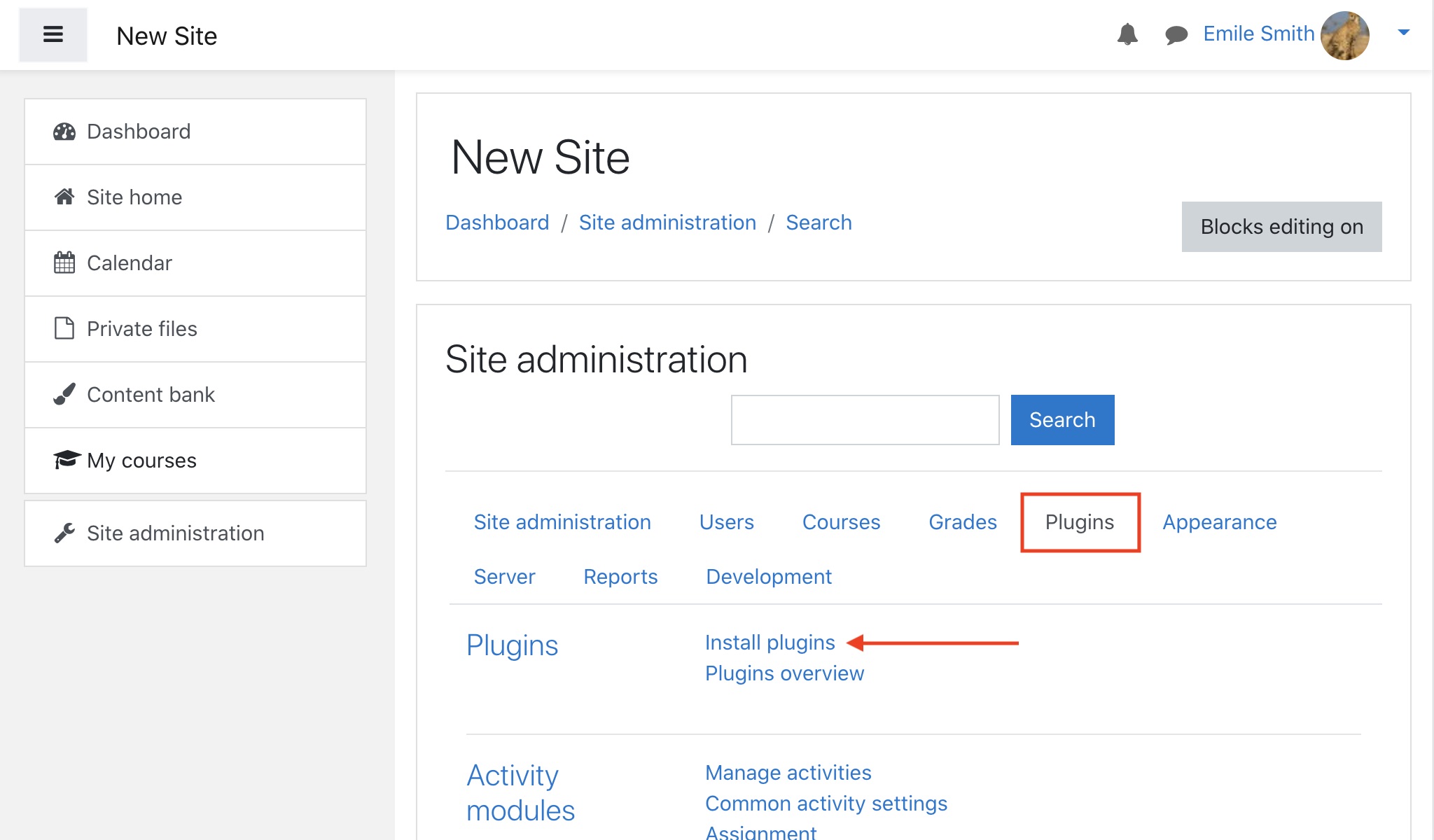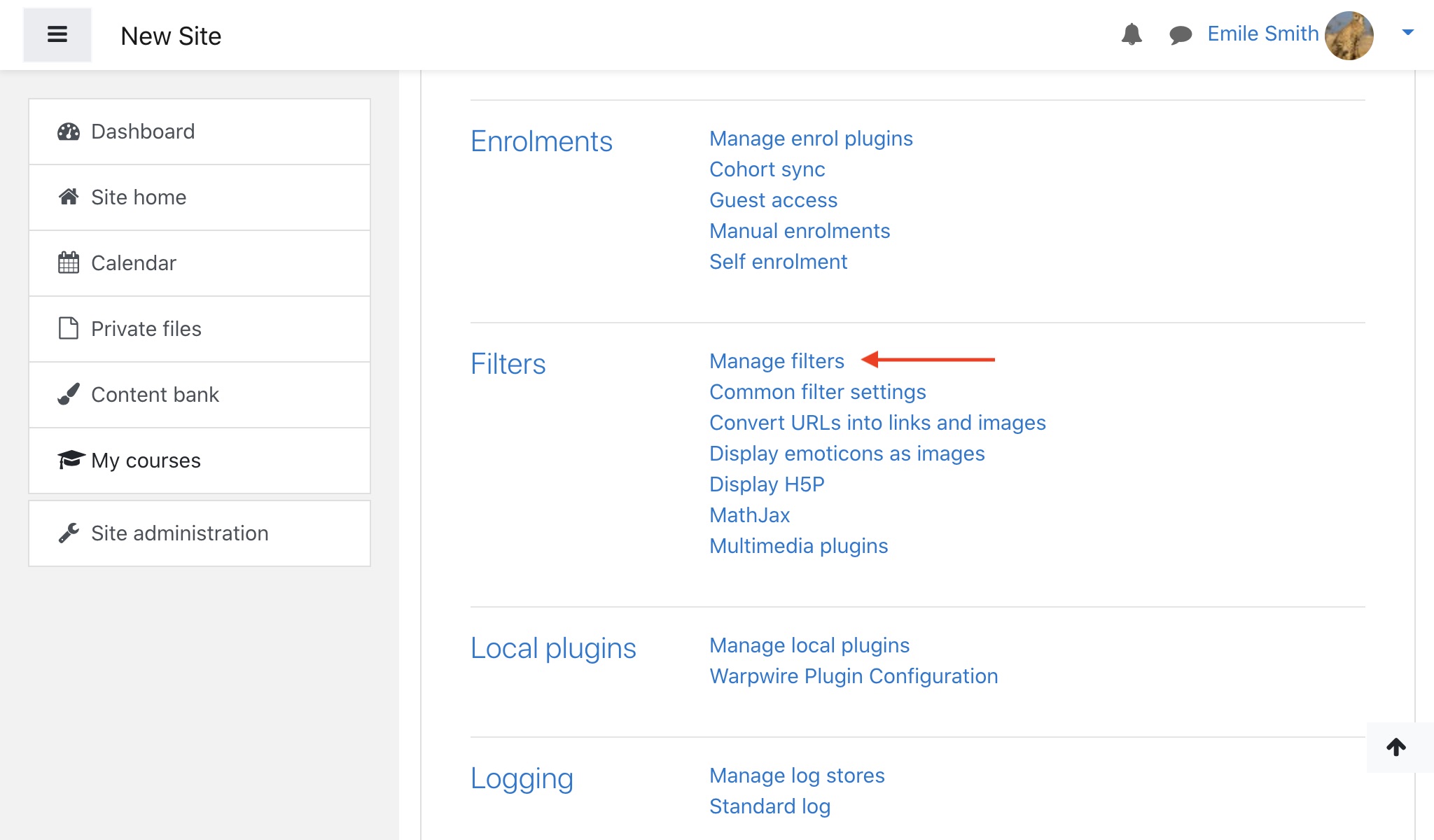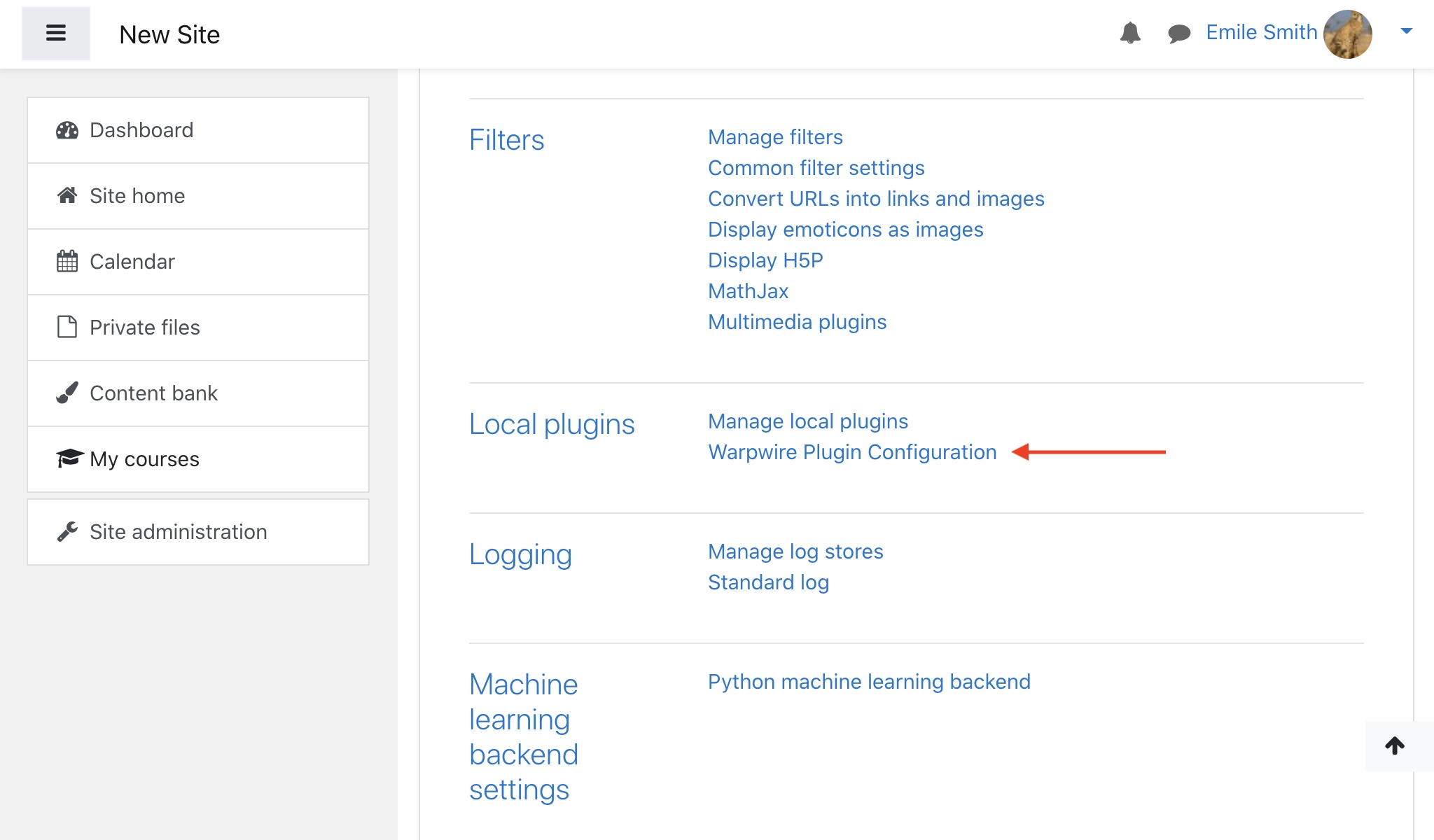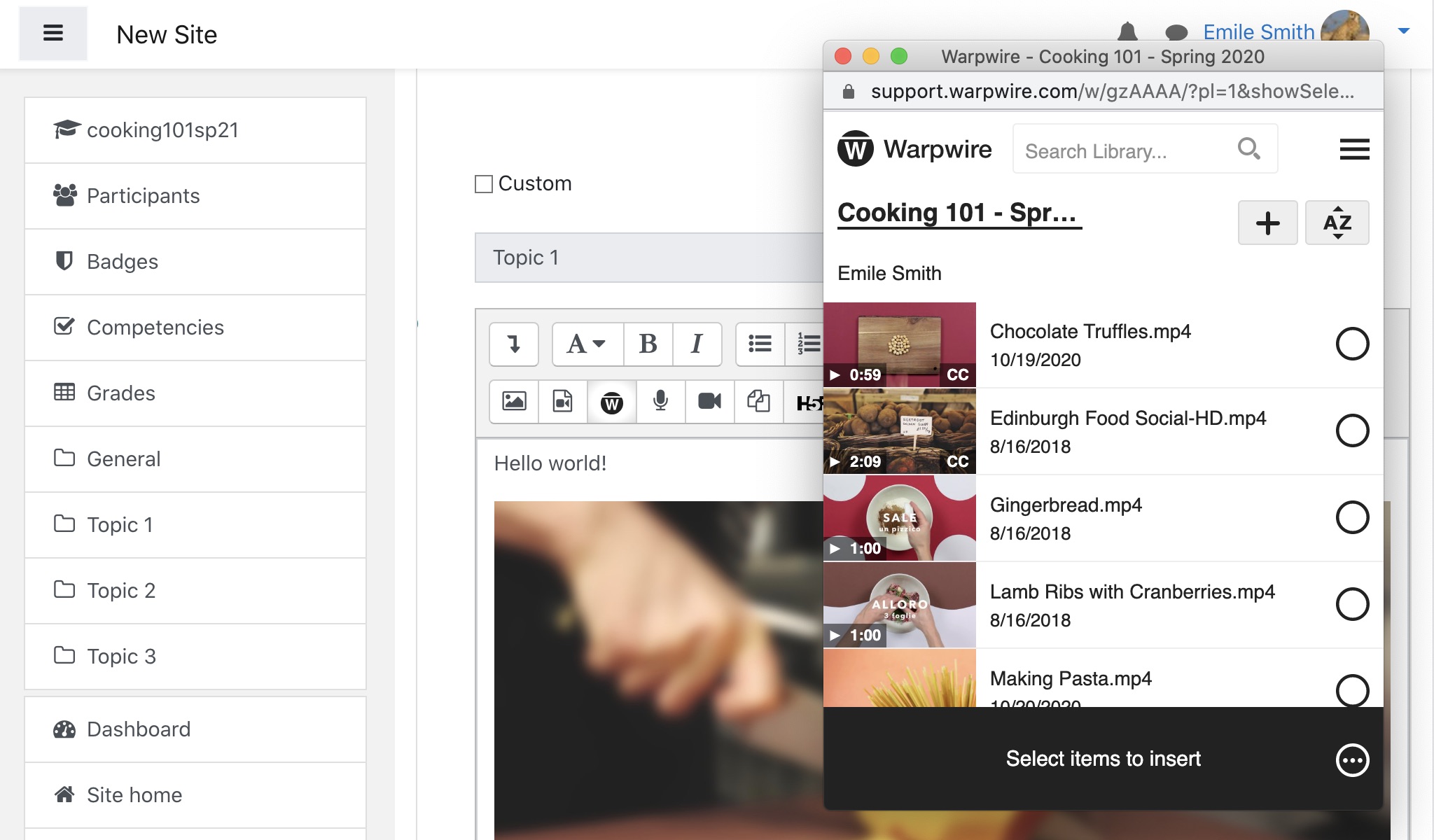The Warpwire Plugin for Moodle allows your users to insert protected Warpwire assets into any content item for which the WYSIWYG editor is available. Once the plugin is installed, it will be available for any and all Moodle courses. For additional information and to download the plugin, please visit our GitHub Page.
Install
1. Download the Warpwire Plugin for Moodle 3 by clicking the 'Clone or download' button, select 'Download Zip' Note: You may also use Git if you prefer
2. Extract the Zip file.
3. Locate the root directory of your Moodle installation, and upload the filter, lib, local, and mod folders into the root directory.
4. Navigate to Site Administration, click the Plugins item, and then click the Install Plugins link.

Fig. 1 - Moodle plugin page
5. Drag or select the local plugin Zip file into the upload section and click Install Plugin from the ZIP file.

Fig. 2 - Upload local plugin zip
6. On the next page, click Continue.

Fig. 3 - Continue install on validation page
7. Click Upgrade Moodle on the next page.
8. Now, return to the Site Administration page and repeat steps 4-6 for the remaining plugin Zip files in this order: filter, editor_atto, editor_mce, and block.
NOTE
You must upload the ZIP files one at a time and go through the entire process for each ZIP file. Be sure to upload each ZIP file in the correct order as listed in step 8.
Configure
1. Navigate to 'Site Administration', click the 'Plugins' tab.

Fig. 4 - Moodle plugin page
2. Scroll down the page and navigate to the 'Filters' section and then click 'Manage filters'.

Fig. 5 - Moodle plugin page, filters tab
3. Scroll down until you see 'Warpwire filter'. From the 'Active?' dropdown menu, select 'On'.

Fig. 6 - Moodle's Manage Filters page
4. Now, navigate back to 'Site Administration', click the 'Plugins' tab and scroll down to 'Local Plugins'. Then, click 'Warpwire Plugin Configuration'.

Fig. 7 - Moodle plugin page, filters tab
5. Once you're in the 'Local plugins' section, click the 'Warpwire Plugin Configuration' link.

Fig. 8 - Moodle's Manage Filters page
6. Fill in the values for 'Your Warpwire LTI Launch URL', 'Your Warpwire Consumer Key', and 'Your Warpwire Consumer Secret'. Note: Please contact Warpwire at tech@warpwire.net to request a consumer key and secret for your Warpwire installation.
Usuage
Warpwire content can now be inserted into content items for which the WYSIWYG editor is enabled. Simply click the Warpwire button in the editor, and you will be taken to your Warpwire application, from which content can be embedded into your Moodle instance.

Fig. 9 - Moodle's Manage Filters page
Was this article helpful?
That’s Great!
Thank you for your feedback
Sorry! We couldn't be helpful
Thank you for your feedback
Feedback sent
We appreciate your effort and will try to fix the article